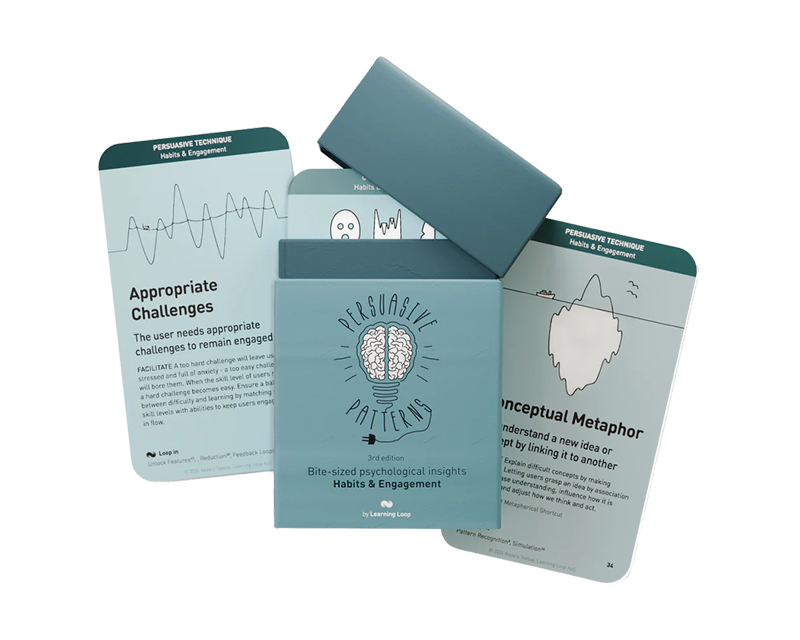Triggers are cues or prompts strategically placed within a user’s environment or journey. They are designed to remind and motivate users to take specific actions.
Consider someone who has recently decided to start exercising regularly. Despite their initial enthusiasm, they find it challenging to maintain this new habit. To overcome this, they strategically place their running shoes and workout clothes next to their bed. This simple act serves as a visual cue each morning, reminding and motivating them to go for a run. This example illustrates how triggers in our environment can influence our behavior. Research supports this, showing that triggers in our everyday environment, like objects or specific situations, can significantly influence our actions and decisions. For instance, Neal, Wood, Labrecque, and Lally (2012) found that strong habits are influenced by context cues associated with past performance, but are relatively unaffected by current goals.
Similarly, digital products often utilize triggers to influence user behavior. For example, a health app might send push notifications to remind users to log their meals or to stand up and move after prolonged periods of sitting. These digital triggers are carefully designed to appear at optimal times, thereby maximizing the likelihood of user engagement and fostering habit formation. Muench and Baumel (2017) highlighted that digital triggers can engage individuals with digital interventions and prompt reactions at the appropriate time, potentially leading to short-term action and longer-term behavior change.
The study
An insightful study that highlights the power of triggers in influencing behavior is the research by Howard Leventhal on the effects of fear and specific instructions in health behavior. This study, focusing on how to encourage more people to get a tetanus shot, provides a clear illustration of how effectively timed triggers can lead to significant behavior change.
The study was centered on understanding how fear arousal, combined with specific action steps, can motivate individuals to get a tetanus inoculation. It explored how the combination of evoking an emotional response (fear) and providing a clear, timely trigger (detailed map and schedule) could influence individuals’ actions.
It was found that students who received both the fear-arousing information about tetanus and specific details on where and when to get the inoculation were more likely to act and receive the shot. This combination of emotional arousal and practical, timely information proved to be a powerful trigger for action.
This seminal study illustrates the importance of not just the content of the message but also its timing and specificity. In the context of designing triggers, it suggests that providing users with timely, specific prompts or cues, especially when aligned with an emotional or cognitive response, can significantly increase the likelihood of them taking the desired action.
Leventhal, H., Singer, R., & Jones, S. (1965). Effects of fear and specificity of recommendation upon attitudes and behavior. Journal of Personality and Social Psychology, 2(1), 20-29.
The concept of triggers is integral to influencing behavior and decision-making in various contexts. They act as subtle nudges, guiding users towards a desired action without being intrusive. Triggers can take many forms, such as notifications, visual cues, or contextual messages, and are crucial in shaping user experience, habits, and responses.
Triggers function by tapping into the human tendency to respond to specific cues with learned behaviors. These cues or triggers can be strategically placed in a person’s environment or daily routine to initiate or modify behavior. This is based on the psychological understanding that behavior is often reflexive and responsive to external stimuli.
The external stimuli, in the form of triggers, act as cues that can activate certain behavior patterns or habits. These stimuli can be anything from a visual reminder, a specific phrase, a particular setting, or even a time of day. The key is that these triggers are associated with a specific response or behavior.
This principle is deeply connected to the theories of conditioning and habit formation. In classical conditioning from behavioral psychology, a neutral stimulus becomes associated with a significant response through repeated pairing. In operant conditioning, behaviors are learned and modified through rewards and punishments. Triggers can be seen as cues in both these conditioning processes, signaling when a particular behavior is appropriate or expected.
On a cognitive level, triggers work by bringing a specific behavior or action to mind, making it more likely that the individual will carry it out. This is particularly effective when the trigger is closely aligned with the individual’s goals, motivations, or needs.
Triggers are most effective when they are presented at opportune moments – when the individual is most receptive to performing the desired action. This concept is aligned with the idea of ‘Kairos’ in persuasive design, which emphasizes the significance of timing in communication.
Triggers or Prompts in the Fogg Behavior Model
BJ Fogg introduced the Fogg Behavior Model in a seminal paper that dove into the interplay of three fundamental elements that prompt a behavior: motivation, ability, and triggers (later renamed “prompts”). This model is particularly significant for its simplicity and applicability across various domains of behavior change.
- Motivation
This element refers to the desire to perform the behavior. Fogg highlighted that motivation could be influenced by factors like pleasure or pain, hope or fear, and social acceptance or rejection. - Ability
This concerns the ease with which the behavior can be performed. It includes factors like time, money, physical effort, mental effort, and routine. - Trigger
The focus of the study, triggers are cues or prompts that signal the user to perform the behavior. They are crucial in the behavior model, as they bridge the gap between ‘wanting’ to perform an action and ‘actually’ performing it.
In his study, Fogg emphasized that for a behavior to occur, a person must be sufficiently motivated, possess the ability to perform the behavior, and be triggered to do so. He presented this interplay as a formula: B = MAT (Behavior = Motivation * Ability * Trigger). In later versions, he renamed the model B = MAP (Behavior = Motivation * Ability * Prompt).
A key finding from the study was that triggers are most effective when they are presented at a moment when the user is both highly motivated and able to perform the behavior. This ‘moment of high motivation and ability’ is what Fogg terms the “Hot Trigger”. If a trigger is presented when either motivation or ability is low, it is less likely to be effective.
The study also differentiated between types of triggers:
- Spark triggers
A trigger used when motivation is low but the ability is high. It is designed to increase motivation. - Facilitator triggers
Used when motivation is high but ability is low. This trigger makes the behavior easier to perform. - Signal
A trigger for situations where both motivation and ability are high. It serves as a simple reminder.
Designing products through Triggers
In order to design successful Triggers, a solid understanding of which moments within a user’s journey that can be used to encourage specific actions or decisions. Specifically, an understanding of what barriers and enablers users face, acting on a trigger in a specific moment is helpful. With a deep understanding of the context, triggers should be designed to be subtle but relevant cues seamlessly integrated into the user experience without overwhelming or annoying the user.
The first step in applying the concept of triggers is identifying key moments in the user journey where a prompt can effectively motivate action. These moments are critical junctures where a user is most receptive or where a subtle nudge could significantly improve their experience. For instance, in an educational app, a prompt to continue a paused lesson could effectively encourage ongoing learning.
Designing these triggers requires a balance between subtlety and noticeability. Visual cues, such as icons, color changes, or interactive elements, should blend organically into the user interface. Their design should enhance, not detract from, the overall user experience. For example, a fitness app might use vibrant visuals to encourage users to complete a workout, integrating these prompts into the natural flow of the app’s interface.
Aligning triggers with user goals is another crucial aspect. Each prompt should resonate with what the user aims to achieve, making the interaction feel personalized and relevant. This alignment is key to ensuring that the triggers are not only effective but also valued by the user. For example, in a productivity tool, reminders or motivational quotes could be aligned with the user’s goals of efficiency and personal development.
In line with the self-determination theory, triggers can be either external or internal. External and internal triggers differ in their application and impact on user behavior. External triggers, such as notifications, advertisements, or prompts, are easier for designers and marketers to administer. They are tangible and can be strategically placed in the user’s environment to capture attention and elicit specific responses. However, their influence is often more immediate and can be short-lived if not reinforced.
On the other hand, internal triggers originate from within the user, driven by emotions, thoughts, or habitual patterns. These triggers are inherently more powerful as they are closely tied to personal experiences, needs, and motivations. They have the potential to create longer-lasting effects, especially in habit formation. When a product or service becomes associated with an internal trigger, such as a particular emotional state or routine, it can lead to more sustained and habitual use. Building these associations requires a deeper understanding of user psychology and behavior but can result in more enduring engagement compared to external triggers.
Examples of external triggers are:
- Paid triggers
These involve traditional advertising methods such as online ads, TV commercials, and sponsored content. Their main benefit is in attracting new users by capturing attention and directing it towards a product or service. Paid Triggers are effective for reaching a broad audience quickly, especially for new product launches or brand awareness campaigns. - Earned triggers
These are achieved through organic means like word-of-mouth, social media shares, and positive press coverage. The key benefit is credibility, as these triggers often come from trusted sources, making them more effective in building brand reputation and user trust. Earned Triggers shine in building long-term brand credibility and should be maximized by encouraging user-generated content and engaging actively on social media. - Relationship triggers
These occur through personal recommendations and referrals from friends, family, or colleagues. They are powerful due to the inherent trust in personal relationships, often leading to higher conversion rates. Relationship Triggers are best applied by incentivizing referrals and creating shareable content that users are likely to pass along within their circles. - Owned triggers
These are prompts within the control of the company, such as email newsletters, notifications, or app icons on a user’s device. The main advantage is the ability to maintain ongoing engagement with existing users, as these triggers often serve as reminders or calls to action. Owned Triggers should be used to keep users engaged over time, by sending timely and relevant notifications or updates that encourage repeat usage or visits.
Internal triggers are linked to emotions, thoughts, or experiences. They can be powerful drivers of user behavior because they tap into personal feelings or needs. Examples of internal triggers are:
- Emotional triggers
These are based on emotional states like boredom, loneliness, or stress. Products that address these emotional states by offering a solution or relief can create strong user habits. Emotional Triggers are best applied in products that offer relief or solutions to common emotional states. For instance, social apps can tap into loneliness by connecting people, or gaming apps can address boredom. - Cognitive triggers
These involve thoughts or beliefs, such as a desire for knowledge or self-improvement. Products that feed into these cognitive needs can become integral parts of users’ lives. Cognitive Triggers can be effectively used in educational or productivity tools, where the desire for learning or efficiency drives usage. - Routine-based triggers
These are linked to daily habits or routines. Integrating a product into these routines can lead to habitual use. Routine-based Triggers are suitable for products that can be seamlessly integrated into daily activities, like fitness trackers that encourage regular exercise or meditation apps that become part of a relaxation routine.
Ethical recommendations
The use of “Triggers” in product design, while effective, carries potential risks of misuse that can detrimentally impact users. Key among these is the risk of inadvertently promoting addictive behaviors. Over-reliance on triggers, especially in apps or websites that benefit from prolonged user engagement, can lead to compulsive use patterns. This is particularly concerning in contexts like social media or online gaming, where constant notifications and cues can create a habit-forming environment.
Another significant concern is the potential invasion of privacy. Triggers often rely on user data to be effective. Misusing this data or employing it without transparent consent can lead to breaches of privacy and loss of user trust.
To ethically incorporate triggers in design, it’s essential to be aware of common pitfalls and actively work to avoid them:
- Overstimulation
Avoid overwhelming users with excessive triggers. This can lead to desensitization, where users start ignoring the cues, or worse, it can lead to stress and anxiety. - Do not manipulate
It’s crucial to use triggers to guide rather than manipulate users. Designers must steer clear of exploiting psychological vulnerabilities to drive user actions that primarily benefit the business at the user’s expense. - Use informed consent
Ensure that users are fully informed about how their data is used to generate triggers. Lack of transparency can lead to mistrust and potential legal issues. - Embrace cultural sensitivities
Triggers should be culturally appropriate and sensitive. What works in one cultural context may be perceived as intrusive or offensive in another. - Embrace user autonomy
Triggers should enhance, not undermine, user autonomy. Users should feel they are making their own decisions, not being funneled into predetermined actions. - Data dependency
Over-reliance on user data for triggers can lead to ethical dilemmas. Designers should question whether the data collection is necessary and proportional to the benefits provided to users. - Failure to adapt to feedback
Not adapting triggers based on user feedback or changes in user behavior can render them ineffective or annoying. Continuous testing and adaptation are essential for ethical use. - Prioritize user well-being
Always prioritize user well-being. If a trigger could potentially lead to negative behaviors or impact mental health, it should be reevaluated or discarded. - Be aware of long-term effects
Consider the long-term impact of triggers on user behavior and attitudes. Short-term gains should not compromise long-term user trust and loyalty.
Real life Triggers examples
Zara
Zara notifies customers when an out-of-stock item is available again, prompting a quick purchase decision.
Fitbit
Fitbit devices nudge users with reminders to get up and move, helping them meet their daily activity goals.
LinkedIn prompts users who viewed a job listing to apply before the application deadline.
Trigger Questions
- Do our triggers align with the key moments in our users' journeys?
- Are our triggers subtle and seamlessly integrated into the overall design?
- How do our triggers align with our users' goals and motivations?
- What feedback mechanisms are in place to gauge the effectiveness of our triggers?
- Are we providing a balance, avoiding overloading users with too many prompts?
Pairings
Triggers + Social Proof
When triggers are combined with social proof, they become more effective. For instance, a notification (trigger) that shows how many people are currently using a service or have recently completed a task can motivate users to follow suit.

Place cues on our regular paths to remind and motivate us to take action

We assume the actions of others in new or unfamiliar situations
Triggers + Commitment & Consistency
Aligning triggers with a user’s previous commitments can reinforce consistent behavior. For example, if a user commits to a daily learning goal on an educational app, timely reminders (triggers) can effectively encourage daily use.

Place cues on our regular paths to remind and motivate us to take action
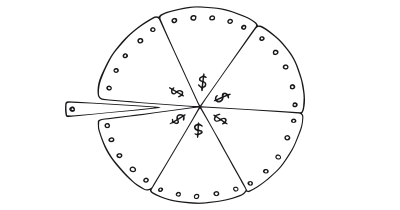
We want to appear consistent with our stated beliefs and prior actions
Triggers + Loss Aversion
Using triggers to remind users of potential losses if they don’t act can be powerful. An example is a fitness app that sends alerts about the potential health setbacks of inactivity.

Place cues on our regular paths to remind and motivate us to take action
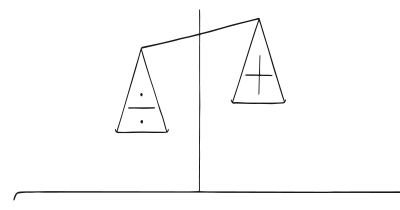
Our fear of losing motivates us more than the prospect of gaining
Triggers + Priming Effect
Triggers can be designed to prime users for certain behaviors or decisions. For example, a shopping app might use visual cues (triggers) to prime users for a sale, increasing the likelihood of purchases.

Place cues on our regular paths to remind and motivate us to take action

Decisions are unconsciously shaped by what we have recently experienced
Triggers + Feedback Loops
Implementing triggers within feedback loops can enhance user engagement. For instance, a project management tool might use triggers to remind users to check their progress, creating a loop of action, feedback, and further action.

Place cues on our regular paths to remind and motivate us to take action
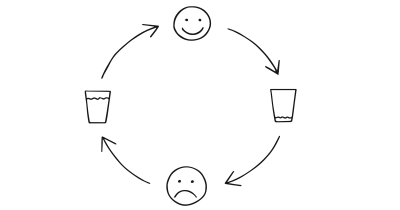
We are influenced by information that provides clarity on our actions
Triggers + Limited Choice
Combining triggers with a limited set of choices can streamline decision-making processes. For example, a dietary app could nudge users towards healthier eating habits by triggering notifications at meal times and presenting a few curated healthy meal options.

Place cues on our regular paths to remind and motivate us to take action
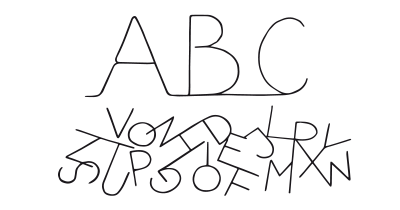
We are more likely to make a decision with fewer options to choose from
Triggers + Hedonic Adaptation
To combat the tendency of hedonic adaptation, triggers can be used to periodically refresh user engagement with a product or service. For instance, a music streaming service could use triggers to introduce new playlists or genres, keeping the user experience fresh and exciting.

Place cues on our regular paths to remind and motivate us to take action

We resume stable levels of happiness despite major positive or negative events
A brainstorming tool packed with tactics from psychology that will help you build lasting habits, facilitate behavioral commitment, build lasting habits, and understand the human mind. It is presented in a manner easily referenced and used as a brainstorming tool.
Get your deck!- A behavior model for persuasive design by Fogg
- Creating Persuasive Technologies: An Eight-Step Design Process by Fogg
- Prompts at behaviormodel
- Making the Fogg Behavior Model actionable by Anders Toxboe
- How Using the Fogg Behavior Model Increases Clicks & Sales by Paul Boynton at Instapage
- Skinner, B. F. (1953). Science and Human Behavior. Macmillan.
- Kahneman, D., & Tversky, A. (1979). Prospect Theory: An Analysis of Decision under Risk. Econometrica, 47(2), 263-291.
- Seligman, M. E. P. (2011). Flourish: A Visionary New Understanding of Happiness and Well-being. Free Press.
- Gollwitzer, P. M. (1999). Implementation intentions: Strong effects of simple plans. American Psychologist, 54(7), 493–503.
- Milkman, K. L., Beshears, J., Choi, J. J., Laibson, D., & Madrian, B. C. (2011). Using implementation intentions prompts to enhance influenza vaccination rates. PNAS, 108(26), 10415-10420.
- Fogg, B. J. (2009). A behavior model for persuasive design. Proceedings of the 4th International Conference on Persuasive Technology, 40.
- Neal, D. T., Wood, W., Labrecque, J., & Lally, P. (2012). How do habits guide behavior? Perceived and actual triggers of habits in daily life. Journal of Experimental Social Psychology, 48, 492-498.
- Muench, F. J., & Baumel, A. (2017). More Than a Text Message: Dismantling Digital Triggers to Curate Behavior Change in Patient-Centered Health Interventions. Journal of Medical Internet Research, 19.
